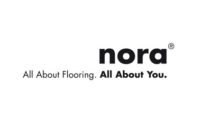MAPEI Products Used Throughout New Cancer Centre






For 100,000 square feet of above-grade areas where there was still some moisture (75% RH), the crews used Planiseal Easyt o reduce MVERs up to 8 lbs. per 1,000 sq. ft. (3,63 kg per 92,9 m 2 ) per 24 hours (ASTM F1869) or up to 90% relative humidity (ASTM F 2170) to 3 lbs. (1,36 kg) or less.
Level floors are important throughout hospital facilities, but they are absolutely critical in diagnostic imaging areas like those at the Cancer Centre. MAPEI’s Planipatch/Planipatch Plus was first applied over the moisture mitigation products to patch smaller voids in the floors, while Mapecem Premix was used to re-fill troughs that were dug out for wiring or plumbing fixtures. Once the surface was prepared to this point, the Belluz crews poured Ultraplan 1 Plus flowable self-leveling underlayment to level the floors.
Linoleum and sheet vinyl flooring are often used in hospitals to minimize the potential for pathogen entrapment in patient areas. At the Cancer Centre, the Belluz crews installed more than 250,000 square feet of linoleum using MAPEI’s Ultrabond ECO 390 adhesive, a newly formulated adhesive specifically designed for the linoleum flooring. The installers set the linoleum first and then cut out the designs and inlaid contrasting colors.
In the diagnostic imaging rooms, the crews installed static dissipative flooring in sheet goods form. For these rooms with their heavy loading from the diagnostic equipment, Ultrabond ECO 360 was used. With its strong, durable, moisture-resistant and alkali-resistant bond, this adhesive is ideal for commercial and institutional applications.
In visitor areas, waiting rooms, and patient bathrooms, the Belluz crew installed tile and stone on walls and floors, using MAPEI’s Kerabond/Keralastic mortar system and Ultraflex 2 mortar, and grouted with Keracolor S and Keracolor U grouts.
Looking for a reprint of this article?
From high-res PDFs to custom plaques, order your copy today!









